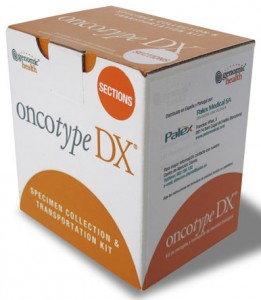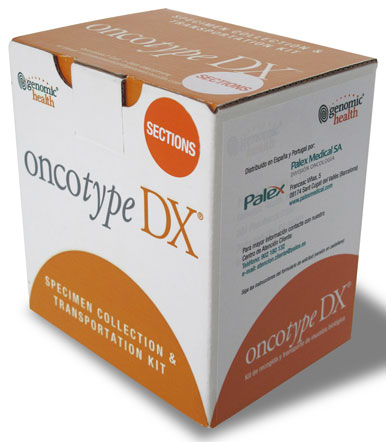 Researchers at the University of Texas MD Anderson Cancer have conducted a large population-based study of Oncotype DX, finding it was significantly linked to a reduced use of chemotherapy in younger breast cancer patients.
Researchers at the University of Texas MD Anderson Cancer have conducted a large population-based study of Oncotype DX, finding it was significantly linked to a reduced use of chemotherapy in younger breast cancer patients.
These findings will be presented by Mariana Chavez Mac Gregor, M.D., assistant professor, during the 2014 San Antonio Breast Cancer Symposium.
Oncotype DX is a 21-gene assay that is used to calculate the probability of disease recurrence in women suffering with early-stage lymph node-negative, hormone receptor (HR)-positive and HER2-negative breast cancer, allowing physicians to define who will actually benefit from adjuvant chemotherapy.
“The results allow physicians to stratify this patient group into low, intermediate and high risk of recurrence, as well as understand a woman’s potential personal benefit from chemotherapy in the adjuvant setting. With this study, we wanted to evaluate the use of Oncotype DX in the general population to see if there’s a relationship between the use of the test and chemotherapy decrease in those patients,” Dr. Chavez Mac Gregor said in a news release.
Researchers analyzed 112,522 patients younger than 65 years of age from the MarketScan research database, along with 54,186 patients older than 66 years of age, from the SEER-Medicare database.
Among younger patients, 13.6% had undergone Oncotype DX, with 60% of women who met the necessary criteria receiving the diagnostic assay. Furthermore, in this patient cohort, testing with this novel tool was correlated with a reduced use of adjuvant chemotherapy.
Amongst older women, the team observed that 7.2% received Oncotype DX, of which 67.1% of HR+, lymph node-negative breast cancer patients underwent testing. However, in this group of patients, Oncotype Dx testing was not linked to reduced use of chemotherapy.
[adrotate group=”3″]
“In the younger group of breast cancer patients for whom the test is appropriate, and when used in this setting, we’re finding an important reduction in chemotherapy use. The contrast between older and younger patients’ results did surprise us. However, generally, older breast cancer patients receive much less chemotherapy because of their age and because they often have additional co-morbidities. Perhaps we will see that impact with time,” Dr. Chavez Mac Gregor added.
Even though this technology has been increasingly used since the first time it was introduced, back in 2005, it still needs further testing. As such, Dr. Chavez Mac Gregor noted that an international clinical trial is currently ongoing.

